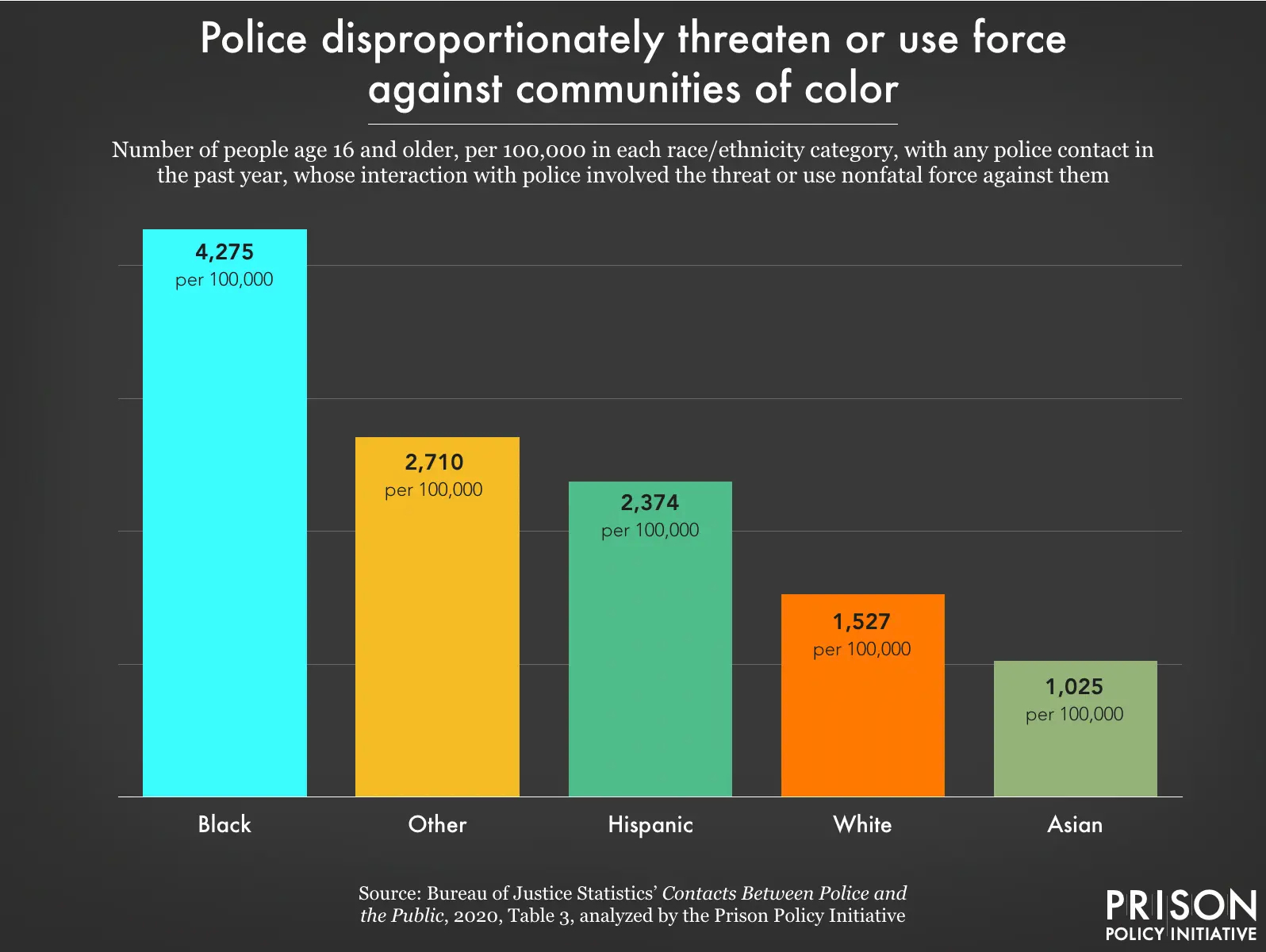Giving Compass' Take:
- Leah Wang unpacks data showing that police use of force has increased for Black, female, and older people while fewer people overall are finding police intervention improves their situation.
- What role can you play in improving police training, practices, and accountability to reduce unnecessary use of force?
- Learn why police reform can't be one-size-fits-all.
What is Giving Compass?
We connect donors to learning resources and ways to support community-led solutions. Learn more about us.
At a time when the public desperately needs accurate, comprehensive data about how the police interface with people in the United States, the Bureau of Justice Statistics has released a new report based on a 2020 survey about interactions between police and the public. Despite a seemingly smaller “footprint” of police interactions in the community that year — fewer people came into contact with police overall — those interactions were still too often racially discriminatory and too often involved improper or harmful conduct.
You might expect that this survey would tell us about the state of policing amidst the deep social unrest caused by the COVID-19 pandemic and a number of high-profile police killings. Unfortunately, the survey was conducted between January and June of 2020, so many of the responses actually refer to experiences with police in 2019 and in the earliest months of 2020. And while the Bureau of Justice Statistics did thoughtfully document certain changes driven by the COVID-19 pandemic in other data collections, the police contact survey results fail to provide the public with critical and timely information about how policing changed — or didn’t change — in 2020, particularly during the nationwide reckoning with racialized police violence after the death of George Floyd. Still, some of the findings got our attention.

Of people surveyed between January and June of 2020 about their recent experiences with police:
More than 1 in 5 people reported coming into contact with police in the past 12 months.
Racial disparities in policing persist, particularly in the threat or use of force. Only 2% of people who had any contact with police experienced the nonfatal threat or use of force by police in the past year, but this aggression fell disproportionately on Black, Hispanic, and “Other” (non-Asian, non-white) people. Black people were also nearly 12 times more likely than white people to report that their most recent police contact involved misconduct, such as using racial slurs or otherwise exhibiting bias.
Older people are vulnerable to harmful interactions with police. More than 1 in 7 people age 65 or older reported police contact, and the number of older people experiencing the threat or use of force nearly doubled between 2018 and 2020.
More and more, police are threatening or using force against women. Women accounted for an alarming 31% of all people experiencing the threat or use of force by police, and over half of women (51%) who experienced threat or use of force in their most recent police interaction reported that such conduct by police was “excessive,” a result which is up a significant 8 percentage points from the last survey in 2018. These findings raise the obvious question: Why are women increasingly targeted by police hostility while men’s police encounters, including arrests, continue to plummet?
Police act “properly” most of the time, but do they provide solutions to people needing help? Of those who initiated contact with police, most (91%) perceived the police as behaving properly when they showed up, and most (93%) were at least equally likely to contact police in the future, varying little by sex, race and ethnicity, or age. But over a third of people (36%) who contacted police for help felt that the police response didn’t improve their situation. The fact that most people would contact police in the future even when they haven’t been helpful in the past is a clear indication of our dependence on police, and the need for alternatives to policing.
Read the full article about police use of force by Leah Wang at Prison Policy Initiative.